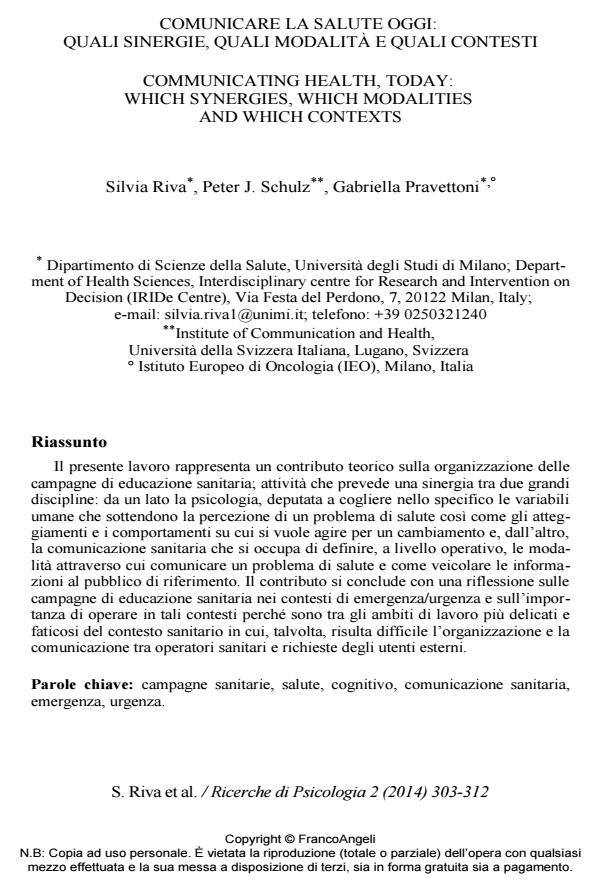Communicating health, today: which synergies, which modalities and which contexts
Journal title RICERCHE DI PSICOLOGIA
Author/s Silvia Riva, Peter J. Schulz, Gabriella Pravettoni
Publishing Year 2015 Issue 2014/2
Language Italian Pages 10 P. 303-312 File size 162 KB
DOI 10.3280/RIP2014-002006
DOI is like a bar code for intellectual property: to have more infomation
click here
Below, you can see the article first page
If you want to buy this article in PDF format, you can do it, following the instructions to buy download credits

FrancoAngeli is member of Publishers International Linking Association, Inc (PILA), a not-for-profit association which run the CrossRef service enabling links to and from online scholarly content.
The current work represents a theoretical contribution on health campaign’s organization; this activity needs the synergy between two important disciplines: Psychology, from one side, aimed to study both human variables linked to health problems’ perception and attitude and behaviours we want to change, and Health Communication, from the other side, aimed to study operations and modalities to communicate health problems as well as how to diffuse information to health campaign’s public. This contribution concludes with a consideration about health campaign in the context of emergency/urgency; this context is very important for health campaign but it is extremely hard and it sometimes has to face challenging events or a difficult communication between health professionals and patients.
Keywords: Health campaign, health, cognitive, health communication, emergency, urgency.
- Corruption in Public Procurement Auctions: Positive Equilibrium Analysis, Incentive Mechanism Design, and Empirical Study Maria Monica Wihardja, in SSRN Electronic Journal /2009
DOI: 10.2139/ssrn.1294088
Silvia Riva, Peter J. Schulz, Gabriella Pravettoni, Comunicare la salute oggi: quali sinergie, quali modalita e quali contesti in "RICERCHE DI PSICOLOGIA " 2/2014, pp 303-312, DOI: 10.3280/RIP2014-002006